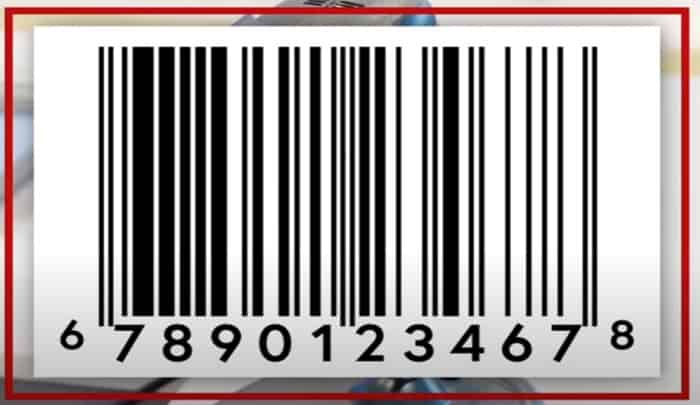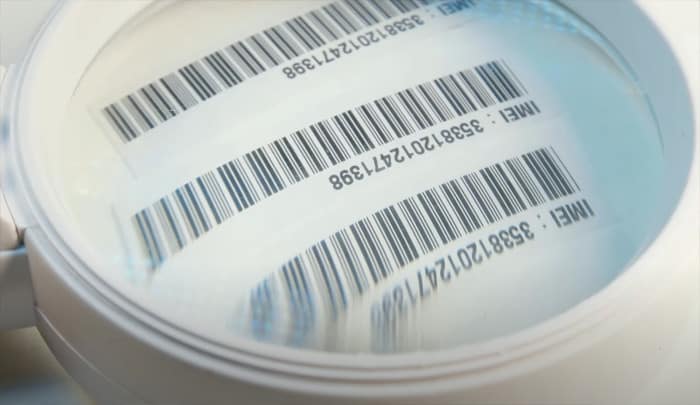We all know the feeling of dread when we pass through a store’s automated sensors after purchasing an item. Our hearts race as the alarms blare, sweat starts to form on our brows, and we patiently wait to see if we can be swiftly escorted out of store or off the hook. But are these store alarms actually triggered by barcodes? Will any barcode we purchase set off the alarm? Find out here!
Generally, scanning barcodes at the store will not set off an alarm. However, if an item has been marked as stolen or requires special security measures, it may trigger an alarm when it is scanned.
“Contrary to popular belief, not every barcode triggers store alarms. Standard barcodes are not equipped with any electronic article surveillance (EAS) technology. Specific EAS tags separate from the barcode are what sets off store alarms if not deactivated.”
Magnus Gravewalker, Security Consultant
What are Barcodes?
Barcodes are a common sight in supermarkets, stores, libraries, and other businesses around the world. They are used to make purchases and track stock inventories more efficiently. A barcode is essentially a collection of black squares and lines arranged into a specific pattern, which can be scanned and translated into useful information by a barcode scanner. Barcodes can contain numbers or text characters that are associated with various pieces of data such as product item numbers, manufacturer details, purchase costs and more.
The debate surrounding the use of barcodes is multifaceted. While they have been widely adopted due to their convenience, critics point out that they are vulnerable to tampering or abuse. Some argue that barcodes enable companies to charge more for products than what would have been otherwise possible without them. Additionally, critics allege that barcodes may lead to increased surveillance of consumer behaviour by companies or other entities. On the other hand, advocates of barcodes argue that they are essential tools in streamlining business processes and provide improved customer service by eliminating manual entry errors and reducing costs.
For businesses, the implementation of barcode systems has enabled them to become more efficient in managing and tracking inventory, thus allowing them to reduce operational costs. Despite the ongoing debates over their potential misuse or abuse, barcodes remain an indispensable part of today’s consumer-driven supply chain environment.
With the advantages of barcodes now well understood, it’s time to explore how barcode scanners work and how they interact with store alarms when products are scanned at checkout.
Next Section: How do Barcode Scanners Work?

How do Barcode Scanners Work?
Barcode scanners are a key part of retail operations, as they’re often used to help with checkouts and inventory tracking. But how exactly do barcode scanners work?
At their core, all barcode scanners have a LED light source and a photodiode sensor that scans the reflected light from a bar code’s specific pattern of lines and spaces. These lines and spaces act like numbers that the scanner is able to read. When it finds a valid bar code, the scanner sends the information using either a USB or wireless connection to the store’s data system.
The ability for barcode scanners to set off store alarms remains debatable. Some believe that because most barcode scanners feature an onboard deactivation device which silences the alarm when it throws off a signal, that this makes it virtually impossible for thieves to shoplift items by scanning them past security pads or sensors. On the other hand, others contend that while such scanners can help catch shoplifters in stores that use such devices, there are still numerous other ways criminals can steal merchandise without setting off alarms – including items like clothes, makeup and electronics — with or without any type of barcode scanning technology.
Regardless of which side of the debate you lean towards, one thing remains clear: barcode scanners are an invaluable tool in helping retailers manage their stores and inventory ,which is why understanding how they work is essential for any business owner.
The next section will focus on uses of barcode scanners — from tracking inventory to checkout time optimization — and their associated advantages so businesses can make an informed decision if they choose to invest in such technology.
Uses of Barcode Scanners
Barcode scanners have become essential for most stores due to the benefits that come with their usage. Barcode scanners facilitate easy tracking of inventory, optimizing stock levels and allowing for a more efficient stocking process. Furthermore, barcode scanners can help reduce checkout times, increasing customer satisfaction and streamlining the entire shopping experience.
An important feature of utilizing a barcode scanner is its ability to accurately track pricing information. By integrating real-time sales data into a system, retailers can make sure customers are being charged the right amount, helping ensure accuracy and ultimately gaining customer trust and loyalty.
Though there are many benefits to utilizing barcode scanners, it’s important to note that they aren’t without drawbacks. Some customers may find having their products scanned before they purchase strange or overbearing. Additionally, there is a financial limitation associated with purchasing and installing these systems–depending on the desired functionality, costs can be quite steep for a small business.
Given the pros and cons associated with using barcode scanners, it’s clear that there are certain considerations that need to be taken into account when deciding whether this technology is right for your business needs. Now that we’ve explored what purposes barcode scanners serve, let’s delve into our next topic – do barcodes set off store alarms?
Do Barcodes Set off Alarms?
Do barcodes set off store alarms? Many shoppers have pondered this question while collecting items and heading out of the store. While it is understandable to worry about setting off the alarm due to an unexpected mistake, fortunately, in most cases, barcodes do not actually trigger a store alarm.
The reason that most store alarms will not sound when coming into contact with a barcode is because these alphanumeric codes are designed only to provide information to scanners about product identities and prices. A simple scan of the barcode does not contain any alerting elements that will initiate a response from the store’s security system. However, different stores may react differently when barcodes are scanned, especially in regard to items that require additional identification measures such as age verification or other processes.
Furthermore, there are some instances where certain types of barcodes may accidentally trigger a store alarm. For example, anti-shoplifting technologies use methods such as RFID tags and electronic article surveillance (EAS) can be activated when they come into direct contact with a scanner or passing through an EAS gateway. Barcodes used for theft prevention purposes are hidden around products or on items that require additional identification processes and those scanners may set off an alarm if triggered.
In conclusion, even though there may be some confusion regarding whether scanning a regular barcode can set off an alarm or not, it is important to note that in most cases these codes themselves do not cause any kind of reaction from a store’s security system – it is only special types of barcodes like those used for loss prevention purposes that could potentially trigger something. In the next section we will explore which types of store security systems can be triggered by those codes and what steps to take if one was to go off unexpectedly.
- A 2017 study found that between 5 and 15 percent of purchases at certain grocery stores are subject to errors due to incorrectly scanned barcodes.
- According to an article published in 2018, incorrect barcodes can be caused by mislabeling the product’s barcode, entering the wrong code, or using a UPC code instead of a barcode.
- In 2015, it was estimated that approximately 1.5 percent of all retail transactions are accompanied by an alarm due to an incorrectly scanned barcode.

Most Important Points to Remember
In general, scanning a regular barcode will not set off a store alarm. Anti-shoplifting technologies such as RFID tags or electronic article surveillance (EAS) can be activated if they come into contact with a scanner or pass through an EAS gateway. In these cases, certain types of barcodes may trigger a store alarm. If an alarm is triggered unexpectedly, it is important to know which type of store security system it is and what steps need to be taken next.
Store Security Systems
Store security systems come in a variety of different forms. Many stores utilize traditional alarms and CCTV surveillance as a way to deter shoplifting. These types of systems can alert store employees that someone may be attempting to steal something, either by the alarm sounding or by being monitored on the store’s camera system. They also can potentially alert law enforcement if there is an active attempt at theft that continues despite verbal warnings to stop.
However, some argue that these traditional type of security systems are outdated and not as effective as other methods in preventing shoplifting. They suggest that incorporating more modern technology, such as RFID tags, have proven to be more successful in providing added levels of security both within and beyond the store premises. For example, with RFID tags embedded into items purchased from the store, the items can be tracked at any point during their journey from store shelf to customer’s doorstep, giving stores a better chance of recovering those items should they become lost during transport. Furthermore, this technology gives stores even further peace of mind when it comes to discouraging thieves from stealing because RFID tags are practically impossible for a thief to remove without rendering the item completely useless.
In sum, although traditional security systems still remain largely in use today, modern day technology is proving to be increasingly helpful when it comes to providing another layer of protection against potential shoplifters. As we will explore later on in this article, shoplifting prevention technology is becoming ever more important and sophisticated due to the risks now posed by criminals who wish to steal items undetected in the digital age. In the following section we’ll delve into just what kind of advances have been made in shoplifting prevention technology and how barcodes play a role in setting off store alarms.
Shoplifting Prevention Technology
Shoplifting prevention technology has seen significant advancement over the years, with retailers increasingly utilizing new tools and systems in order to deter potential criminals. Since barcodes are a major component of any store’s checkout process, it stands to reason that they could potentially be incorporated into shoplifting prevention efforts as well.
To understand how this technology could work, it is important to consider what modern shoplifting prevention methods already exist. Common examples include high-tech computerized tags that send an alarm signal when taken out of a store or handheld security wands which detect when an item has not been properly scanned at checkout.
The idea of using barcodes for shoplifting prevention requires further exploration though. On one hand, such codes could be used alongside existing measures in order to create even stronger systems for detecting theft by ensuring items are both scanned and tagged for security purposes at all times. On the other hand, some might argue that such codes enter into delicate ethical territory as shoppers may become overly policed in the name of security.
It is clear then that incorporating barcodes into shoplifting prevention technology must be tested rigorously before being implemented. By weighing the pros and cons carefully, retailers could significantly enhance their loss prevention strategies while maintaining a positive shopping environment for customers at the same time.
Leading into the next section, this article will explore exactly how stores combat theft by examining the different technologies they employ and approaches they take to mitigate shoplifting losses.

How Do Stores Combat Theft?
Stores recognize the importance of discouraging shoplifters, not only to protect their merchandise but also to maintain a safe environment for customers and employees. To combat theft, retailers have implemented various security systems such as CCTV cameras, alarm systems, and even cashier surveillance. Although these measures may help reduce shoplifting, they don’t always guarantee complete protection from potential theft.
One way stores are using barcodes to combat theft is by associating them with specific items. Retailers use barcodes to identify each item so that if someone tries to steal an item from a store, the barcode will be scanned at the checkout which will alert the staff that the item is being stolen. It also helps store owners monitor inventory levels and keep track of what items are selling better than others.
Another way stores are combating theft is by implementing security tags on products that can trigger alarms if someone attempts to walk out of the store with a product without paying for it. These tags contain special microchips embedded in them which send a signal to a security system when they pass near a sensor placed at the doors of the store. This system also helps track down shoplifters as well as alerting staff of any suspicious activity in the store.
Not many stores use barcodes solely to combat theft, as other security measures may be more effective when used in combination with barcodes. Some argue that implementing more sophisticated biometric identification methods would be more secure than using barcodes in order to ensure that shoppers have paid for their merchandise before leaving the store. However, others point out that biometric systems are incredibly expensive and difficult to maintain and thus may not be practical for all retailers. Ultimately, it is up to each store to decide which methods would work best for them in order to protect their merchandise from theft.
Lead into next section:
Now that we have seen how stores attempt to combat theft using barcodes, let us proceed further and learn about Barcode Security Systems in Retail Stores.
Barcode Security Systems in Retail Stores
When it comes to maintaining security in retail stores, barcode security systems are often used to identify and deter theft. These systems rely on the use of barcodes which are present on merchandise, creating a unique code that can be scanned as items leave the store. The purpose of these scanners is to alert staff when an item has not been purchased, thus preventing shoplifting.
Proponents of barcode security systems argue that these systems offer an effective way to prevent theft and easy access for customers. By quickly scanning items as they are left the store, security personnel can immediately identify any stolen items and take necessary action. Additionally, barcode security systems provide an efficient way for customers to purchase items without having to wait in long lines or present cash or credit cards at the time of purchase.
On the other hand, opponents of barcode security systems point out that these systems do come with certain downsides. In some cases, false alarms may be triggered when legitimate purchases are made, leading customers to think their items have been stolen when they have not been. Additionally, some critics claim that these systems lead to invasions of customer privacy by retaining information about their purchases which can then be used by retailers for marketing purposes.
The debate over barcode security systems in retail stores continues, but there is no denying their potential in helping store owners maintain a safer shopping environment for both customers and employees. Ultimately, businesses must consider both the pros and cons of these types of security measures before deciding whether or not to implement them into their stores.
Before coming to a conclusion about the efficacy of barcode security systems in store settings, it is important to consider all perspectives involved in this debate. In the next section, we will discuss this topic further and conclude whether or not these systems should be employed in retail stores.
Conclusion: In the following section, we will explore this debate further and come to a conclusion regarding the usage of barcode security systems in retail stores.
Conclusion
It is no surprise that customers are perplexed by the idea of barcodes setting off store alarms. This confusion can be attributed to the different types of technology in use at various stores, which may or may not involve barcodes. In truth, the majority of security systems employed by stores today do not rely on barcode scanning and thus will not typically set off a store alarm. However, there are situations in which a barcode passing over a scanner could trigger an alarm—most often when it relates to an item’s integrated RFID tag.
Ultimately, it is important for shoppers to stay aware and cautious as they shop in order to avoid any potential false alarms from barcodes. Shoppers should resist the urge to test a product by swiping its barcode across sensors or attempting to take it out of the store without being inspected by store personnel. Security measures are being put into place with good reason, and shoppers should respect those measures while shopping both online and in-store. The bottom line? Barcodes generally will not set off a store alarm; however, shoppers should remain vigilant so that they do not put themselves in a position that may cause one!

Common Questions
Are barcodes detected by traditional alarm systems?
The answer is yes, barcodes are detected by traditional alarm systems. There are special sensors that detect when a barcode passes through the magnetic field of the electronic article surveillance (EAS) system (sometimes referred to as an antennae gate). When this happens, an alarm will sound indicating that an item has been taken without being properly purchased. This helps store owners protect their merchandise from theft.
Barcodes are also used to help track products in retail stores; scanners at the checkout counter read the barcode and process the purchase. This helps stores keep better inventory records and can be used to create shopper loyalty programs.
What security measures are used to prevent barcodes from setting off alarms?
Security measures used to prevent barcodes from setting off alarms vary by store, but typically involve using technology like RFID or RF-EAS tags. RFID tags are placed on products and scanned using radio frequency signals. This allows the system to identify the product and store it in a database. RF-EAS tags are built into packaging materials, usually with a metal shield that blocks any signal transmission outside a designated perimeter. The tag will be triggered if it is taken beyond this area, and will sound an alarm to alert security personnel. Additionally, anti-theft gates at checkout areas are designed to pick up on barcode signals and trigger an alarm if unauthorized movement of items occurs.
What types of alarm systems are triggered by barcodes?
Yes, barcodes can set off store alarms. This is because most alarm systems are designed with an anti-shoplifting mechanism that detects when tagged merchandise has been removed from the store without being properly scanned and paid for. When a tag or barcode is not scanned at the register, it triggers the alarm – often sounding the store’s security system and alerting personnel to check out what’s happening at the checkout counter.
To ensure that this anti-theft technology works efficiently and effectively, stores use special types of alarm systems that employ magnetostrictive tags or radio frequency (RF) tags, which originate from either a source in the retail environment or from a product within it. These RF tags send signals to receivers positioned throughout the store, causing an alarm to be triggered once the tag clears certain points throughout the environment.
In addition to RF tags, many retailers also equip their products with RFID tags that provide item-level tracking and can detect if items have been taken out of the store without being paid for. Specifically, when tagged items pass through exit gates or doorways, the tags activate unseen sensors, setting off loud security alarms designed to alert personnel and deter potential shoplifters.
Overall, retailers make use of a variety of specialized alarm systems in order to achieve maximum security against theft and fraud. Whether it’s passive radio frequency systems, active RFID chips, or magnetostrictive tags, these technologies allow stores to protect their merchandise by making sure proper procedures are followed when customers enter and make purchases.
References
https://immago.com/how-barcodes-work/
https://blog.btohio.com/how-smart-barcode-scanners-deter-theft#:





Speaking from my years in the field, it’s not the barcode that triggers these security alarms but the hidden RF or AM labels. Constantly worrying about barcode-related alarms is a widespread misunderstanding.
Just like Quinton pointed out, barcodes are harmless when it comes to store security alarms. Consider them akin to an identity card that the scanner checks during checkout- it’s not the ID that sounds an alarm, but the absence of one might.
Think about the relationship between barcodes and security devices like messages and the Internet. Just because you’re online doesn’t mean everyone has access to your messages. It’s the same with barcodes; they don’t trigger alarms, the security tags or removed security labels do.
Just like how a lock only opens when a correct key is used, the alarms at stores are triggered by specific tags, not barcodes. Likewise, if you try using a random key on a lock, it wouldn’t open the door, similarly, a barcode won’t set off an alarm just by itself.
Because of my career, I have a great idea of how these systems work. Kesler, you’re absolutely right that the store alarms are backed by specific tags and not barcodes. Barcodes do carry identifiers for products but they aren’t designed to set off security systems. It’s generally Electronic Article Surveillance (EAS) tags linked with the items’ details that trigger those nerve-wracking alarm systems when not deactivated.
As someone actively involving in unraveling theft syndicates, I would say Yvonne got the point. RFID tags or EAS tags, not barcodes, are what set off those alarms. REMEMBER: it’s crucial to distinguish them because criminals imply different methods to disable each one of them.
As a professional dealing with store security, I would second Rosendale’s point. RFID tags and EAS tags are the true perpetrators behind those blaring alarms, not barcodes. The misconception lie in a lack of understanding about store security systems amongst the general public.
When we started using electronic article surveillance (EAS) systems in our stores, security improved significantly; it’s not about barcodes at all.